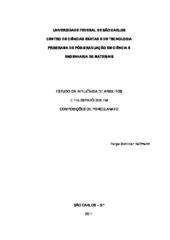Estudo da influência de argilitos e feldspatóides em composições de porcelanato
Abstract
Considering the various types of ceramic tiles used today, the stoneware tile is distinguished by its aesthetic and technical characteristics, such as: very low water absorption (less than 0.5%), high mechanical strength, high abrasion strenght, high chemical and frost strenght. Commonly, a composition of stoneware tile is constituted by homogeneous mixture of plastic clay(s), kaolin, feldspar, quartz and talc of high purity. This work studied the effect of replacing the plastic clay used in the manufacture of this product, typically a clay, by a mudstone of lower refractoriness. Another object of study was to evaluate the influence of the replacement, even partially, the content of feldspar (which is the raw material most suitable flux and used industrially, around 45% by mass) for nepheline, evaluating the technical characteristics achieved in the final product. For this, emphasis was given to the use of different levels and types of trainers from the liquid phase (feldspar and nepheline) in compositions of bath with the mudstone. For comparison it was characterized, by means of physical tests, the linear shrinkage and water absorption (vitrification curve), and flexural strength of a standard composition, reported in the literature, and new compositions. In addition, it was evaluated the cycle and the level of firing (1200 ° C is the temperature industrial average), verifying the possibility of reducing consumption of natural gas, which represents the main energy source of the production process.
